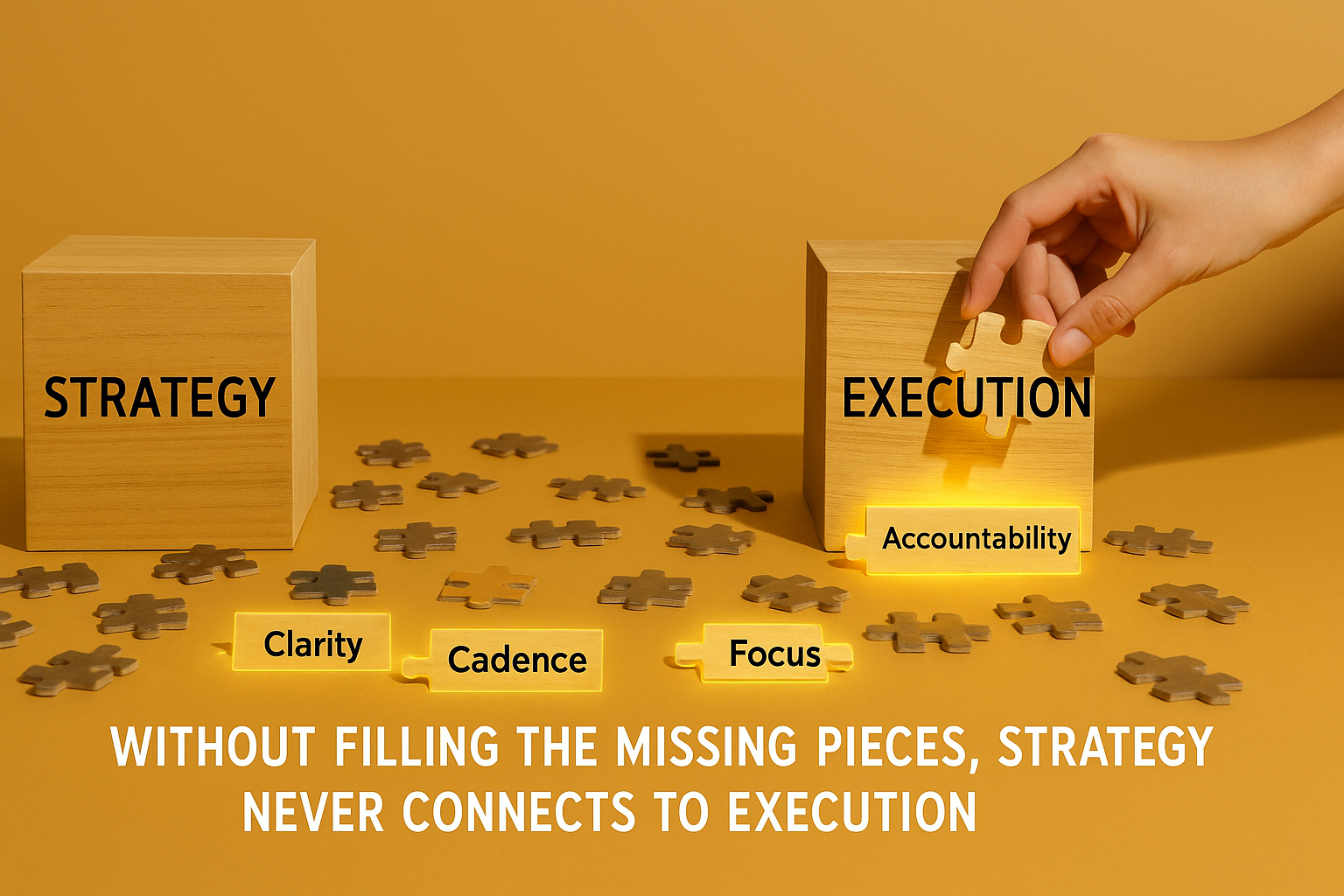Strategy vs Reality: Why Sales Plans Fall Apart in the Field (and How to Fix It)
Every year, leadership teams approve ambitious sales strategies. Growth targets are agreed, playbooks are written, and town halls are filled with optimism. Yet by mid-year, pipeline velocity slows, forecasts start slipping, and frontline teams are wrestling with the same challenges as last year.
The uncomfortable truth is that most sales strategies do not fail because the ideas are wrong. They fail because execution on the ground never matches the intent. Research from Harvard Business Review shows that as many as two-thirds of well-formulated strategies collapse at the execution stage. The vision is there, but the connection between the boardroom and the sales floor is often too fragile to withstand the realities of daily selling.
Where Sales Plans Break Down
The cracks usually appear in familiar places:
Too generic: Strategies that sound good but do not translate into daily behaviours.
Weak management cadence: Managers report numbers but spend little time coaching execution.
Shiny object syndrome: Reps are pulled into too many initiatives, tools, and distractions.
No accountability loop: Leaders assume adoption has happened without checking traction in the field.
Closing the Gap Between Strategy and Reality
Fixing the problem is less about rethinking strategy and more about building discipline. Plans need to be translated into frontline language, giving salespeople clarity on what the strategy means for their calls, their meetings, and their pipeline priorities.
Execution should be made visible by tracking the behaviours that drive outcomes, not just the lagging indicators. Managers must create a rhythm of reviews and coaching that reinforce the plan until it becomes habit. And senior leaders need to hold themselves accountable, not simply for announcing the strategy, but for ensuring it takes root in daily practice.
The Real Test of Strategy
Sales strategy does not fail on paper. It fails in practice. The leaders who close the gap between intention and reality are those who spend less time in debate and more time embedding discipline into daily execution.
The question is not whether your strategy is bold enough. The real question is whether you are managing the strategy itself — or managing the reality of how it is lived every day in the field.


